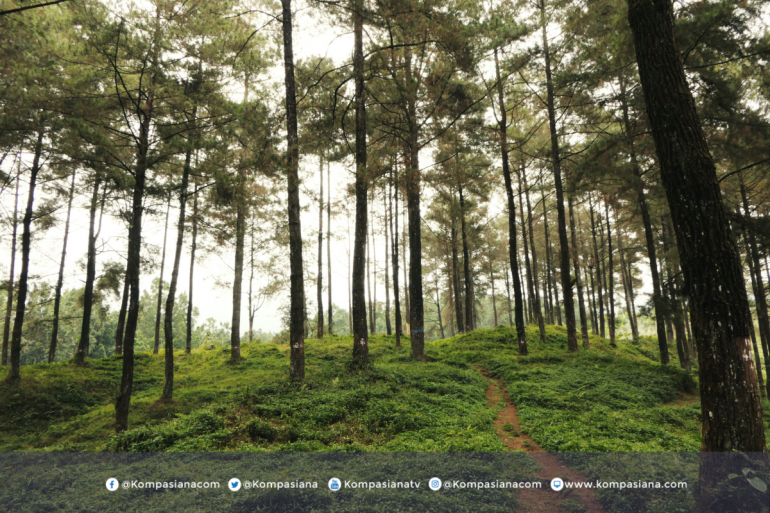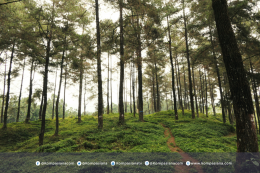The Bornean orangutan (Pongo pygmaeus), the iconic "people of the forest," are about to embark on a journey that will test their resilience and our commitment to their survival. The orangutan is closely linked to the existence of lowland tropical rainforests, and it's facing an existential crisis due to their disappearance. The facts are sobering. A study in 2015 (Struebig, Fischer et al. 2015) predicted 74% of orangutan habitat would be wiped out by 2080, due to climate change and deforestation. The Bornean orangutan population has declined by 80% since 1973 (BOSF 2024), but the situation could get worse if Indonesia moves its capital to Borneo, triggering extensive land clearance for human infrastructure.
Conservation efforts alone may not suffice to save the orangutan, not to mention all the other endangered species. More radical and urgent action is needed to save the Bornean orangutan from extinction. In fact, the time for gradual steps that do not threaten economic growth is long over. Enter, the "Nature Needs Half" (NNH); vision to transform half of the earth into interconnected protected areas (Cafaro, Butler et al. 2017, Kopnina, Washington et al. 2018).
Currently, only (5,183,031.73 hectares) 6.97% of Kalimantan's 36.9 million hectares of forest is a conservation area based on Ministry of Environment and Forestry-2022. The rest is already used for forestry production including oil palm plantations, or will be in the future, unless action is taken. Projections for 2050 and 2080 show that the areas of suitable habitat will all but disappear, with only small disconnected traces of it left for us to search with a magnifying glass.
Now, for the mind-blowing part: we need to expand the conservation areas a lot. Like, a lot, a lot, including converting existing plantations and production forests to protected land. If we want to do it well, we should prioritise key ecosystems, including peatlands for good measure, and allow marginal or degraded production forests to recover. The implementation of NNH will certainly cause economic losses. For example, abandoning the 30 million hectares of oil palm and food crop farming could result in losses of over $180 billion/year (Siswati, Insusanty et al. 2023). Not to mention the costs associated with managing the protected areas, potential land rights conflicts, and displacement of indigenous peoples.
So, is it worth it? Some conservationists say that acting now is not only the right thing, but the sensible thing. They say saving the forests will preserve important carbon sinks, thus mitigating climate change, but also protect the habitats orangutans and many other species call their home. Thus, the value of ecosystem services provided by tropical forests, is estimated at $2,700/hectare/year (van Best and van Dijk 2020). This suggests that the long-term benefits of conservation may outweigh the short-term economic costs.
The "Nature Needs Half" approach is not just theory; it has been implemented in public policy in several countries (Locke 2013). In Haida Gwaii, British Columbia, a combination of national parks, provincial parks, and First Nations conservancies have created protected areas that cover more than 50 percent of the original land and marine protected area system. On the Indian subcontinent, the ancient kingdom of Bhutan recently announced that it had achieved 50 percent protection by designating more than 42 percent of its territory as protected areas and more than 8 percent as biological corridors. Meanwhile, about 65 percent of the Canadian Rockies biome in Alberta is protected through a combination of national parks, provincial parks and wilderness areas.
One of the biggest criticisms of large-scale conservation is that it often ignores the rights of indigenous peoples. A true NNH approach should not displace these local people, but rather empower them to become stewards of their lands. NNH also envisions empowering local communities, sustainable use of resources, ecotourism, and bioprospecting. Engaging local communities as partners and ensuring they receive real benefits from conservation is likely to make a real difference, particularly if the socio-economic factors that lead to unsustainable resource use are addressed.
Yet, I have become cynical about pretending. Of course, the economic value of a production forest seems higher than active natural forests, but I for one place a very high intangible cost on participating in the sixth mass extinction. If we always put economic growth ahead of biodiversity, what kind of world will we leave behind?
Nature Needs Half, but more specifically, humans need nature. We do know that, the question is, are we willing to make the sacrifices necessary to protect it?
References
BOSF. (2024). "THREATS TO ORANGUTANS." Retrieved 31 May 2024, 2024, from https://www.orangutan.or.id/threats.







